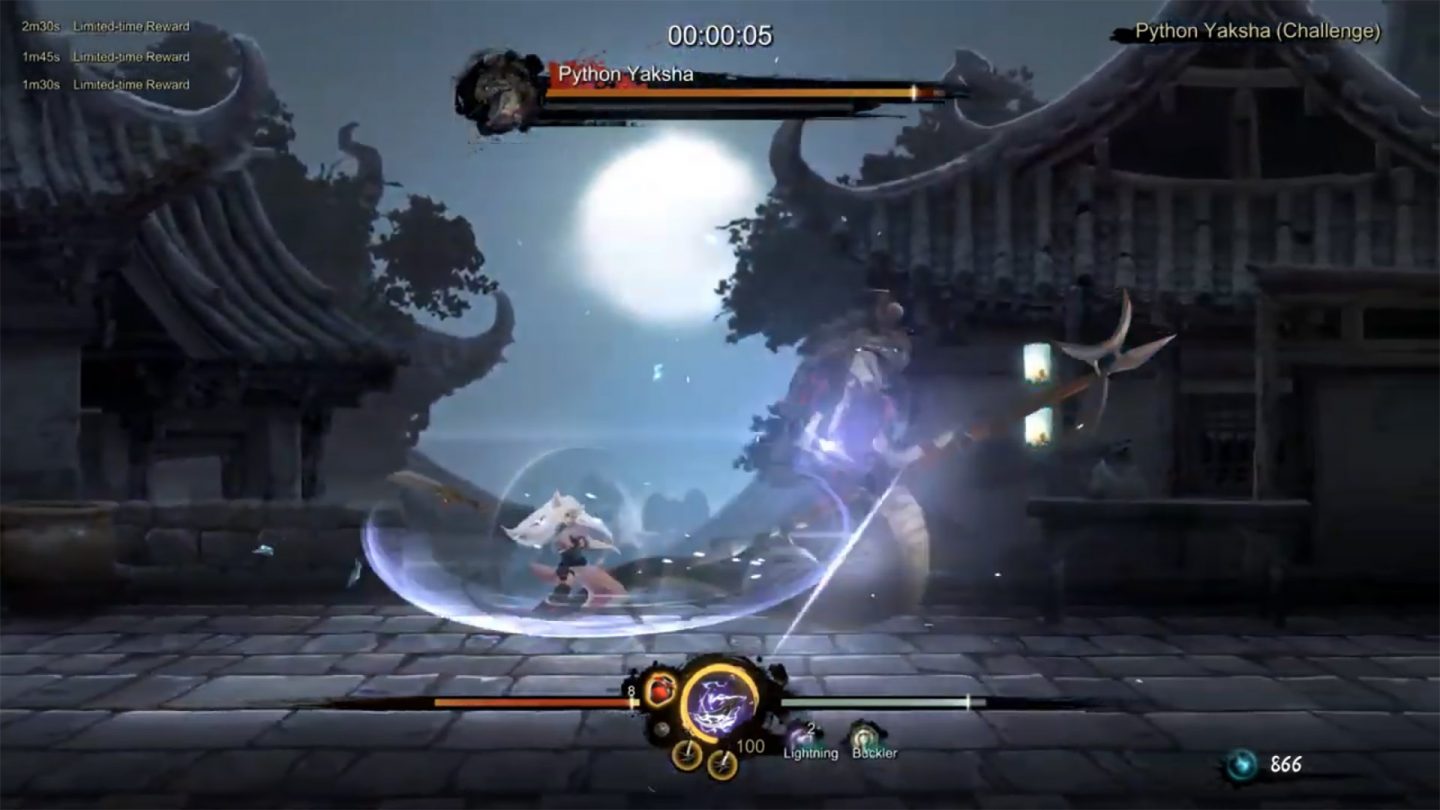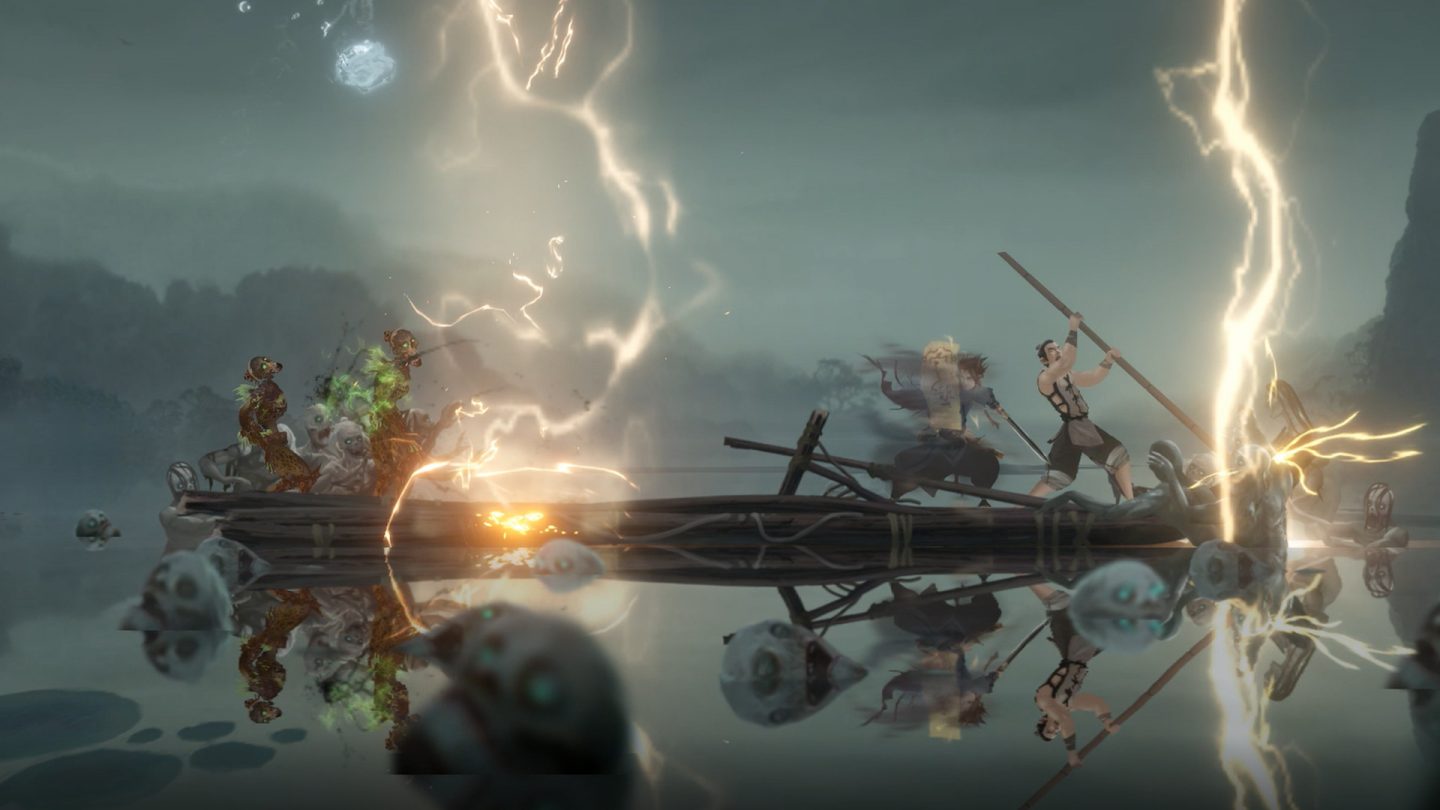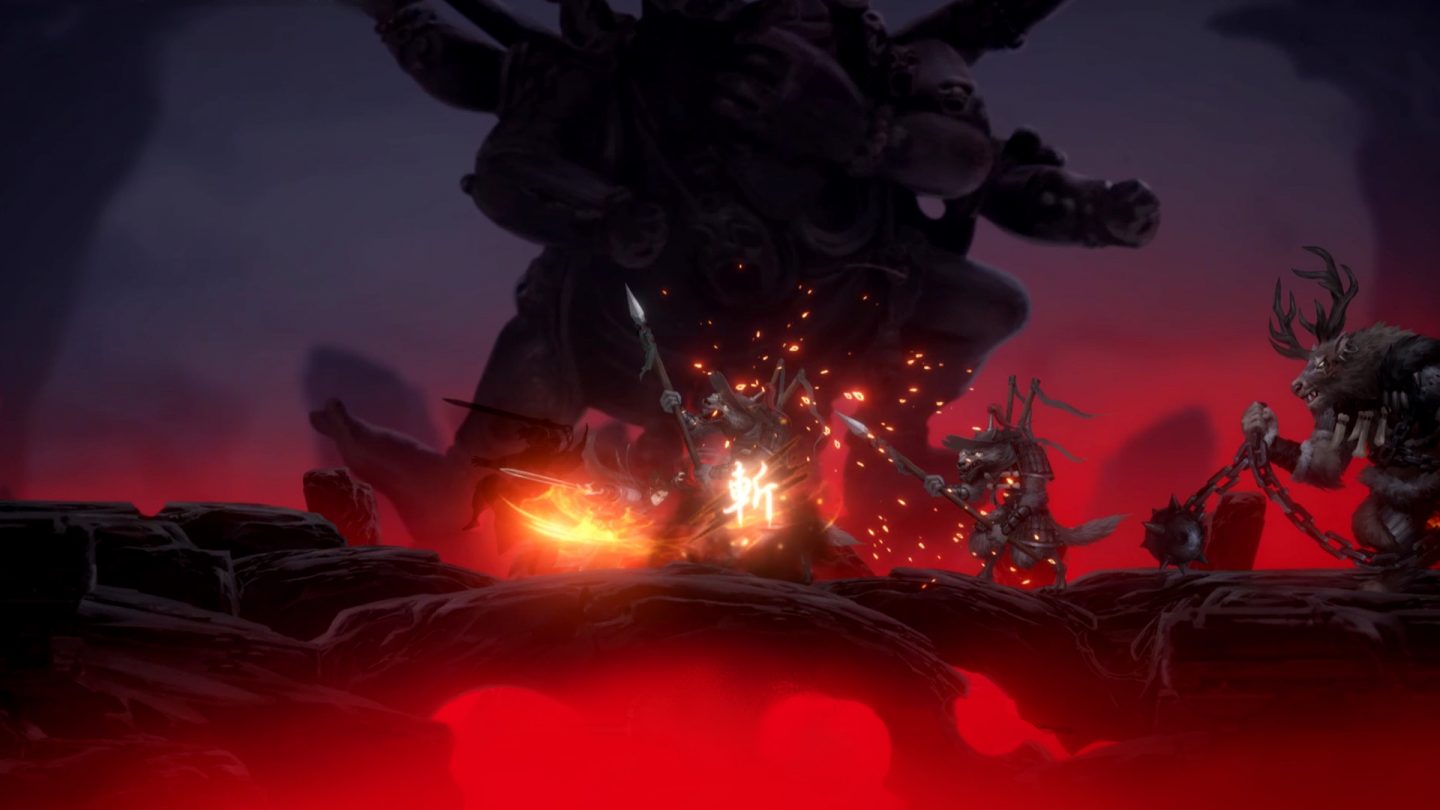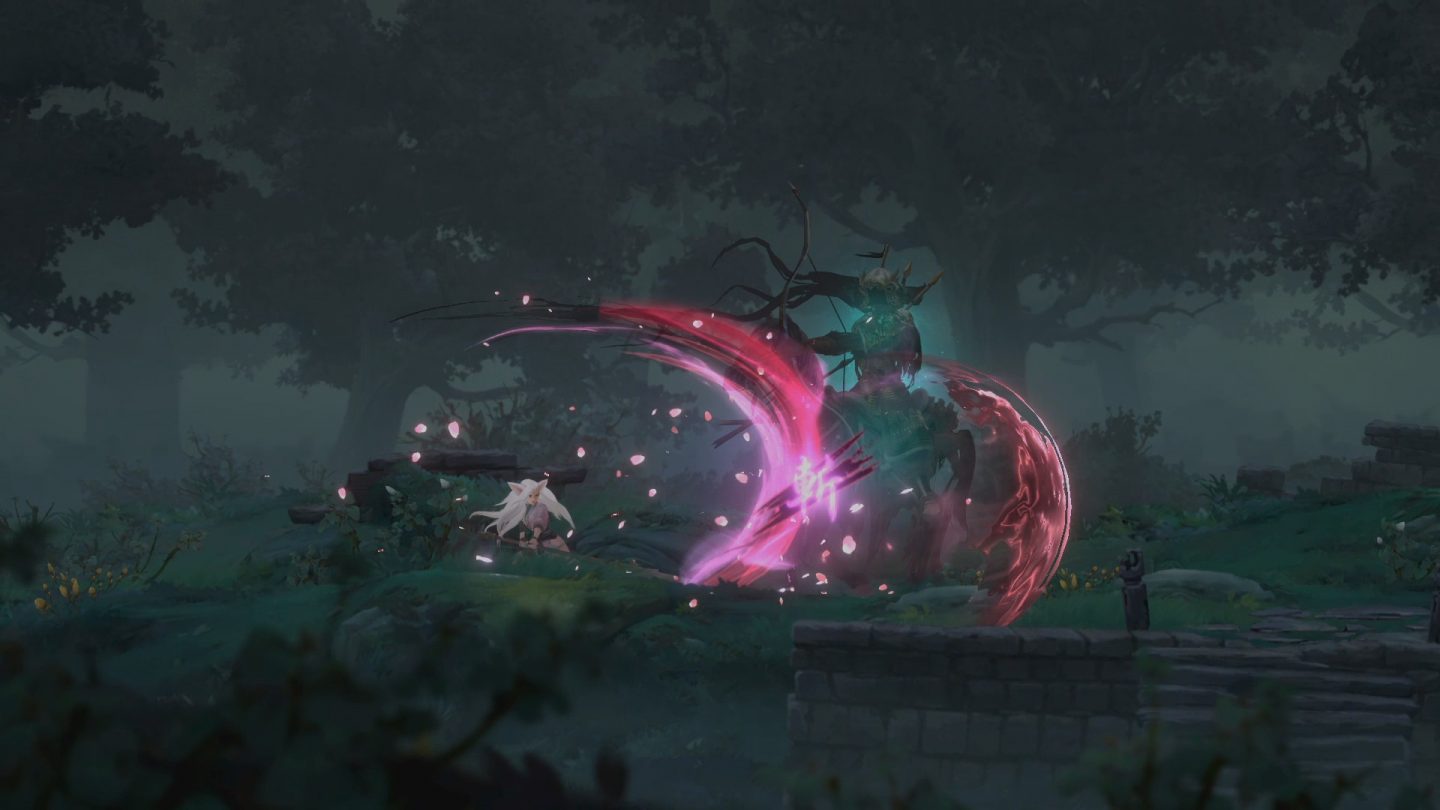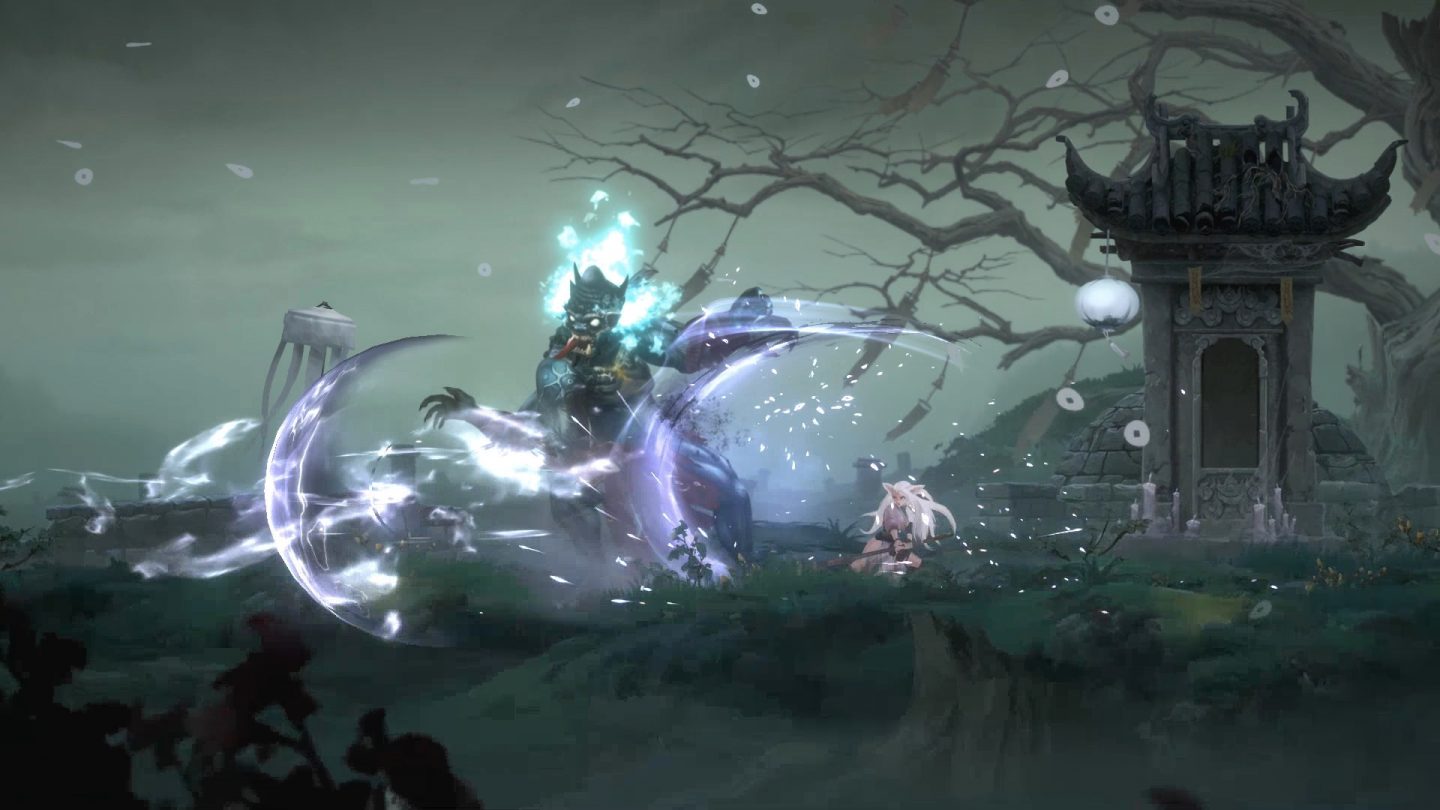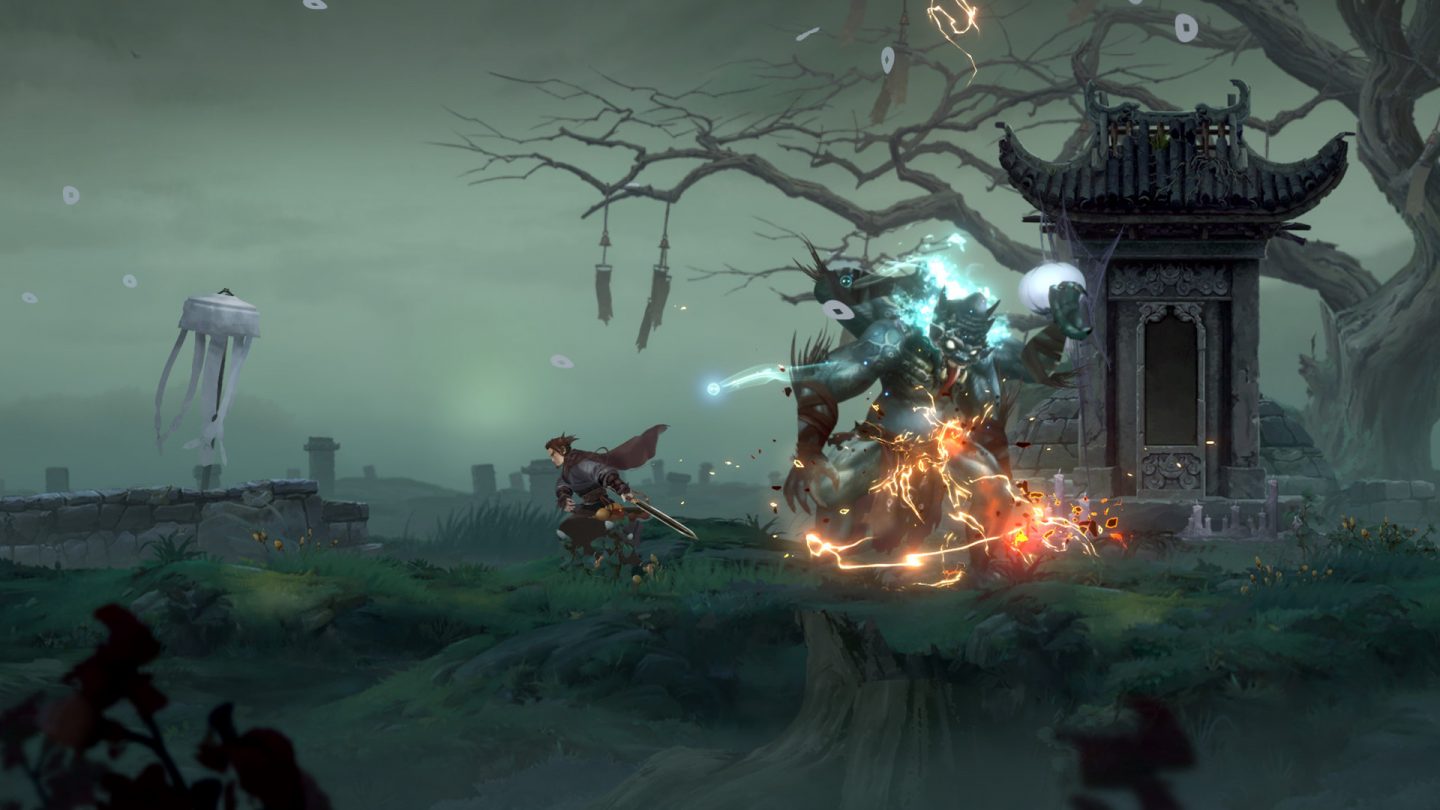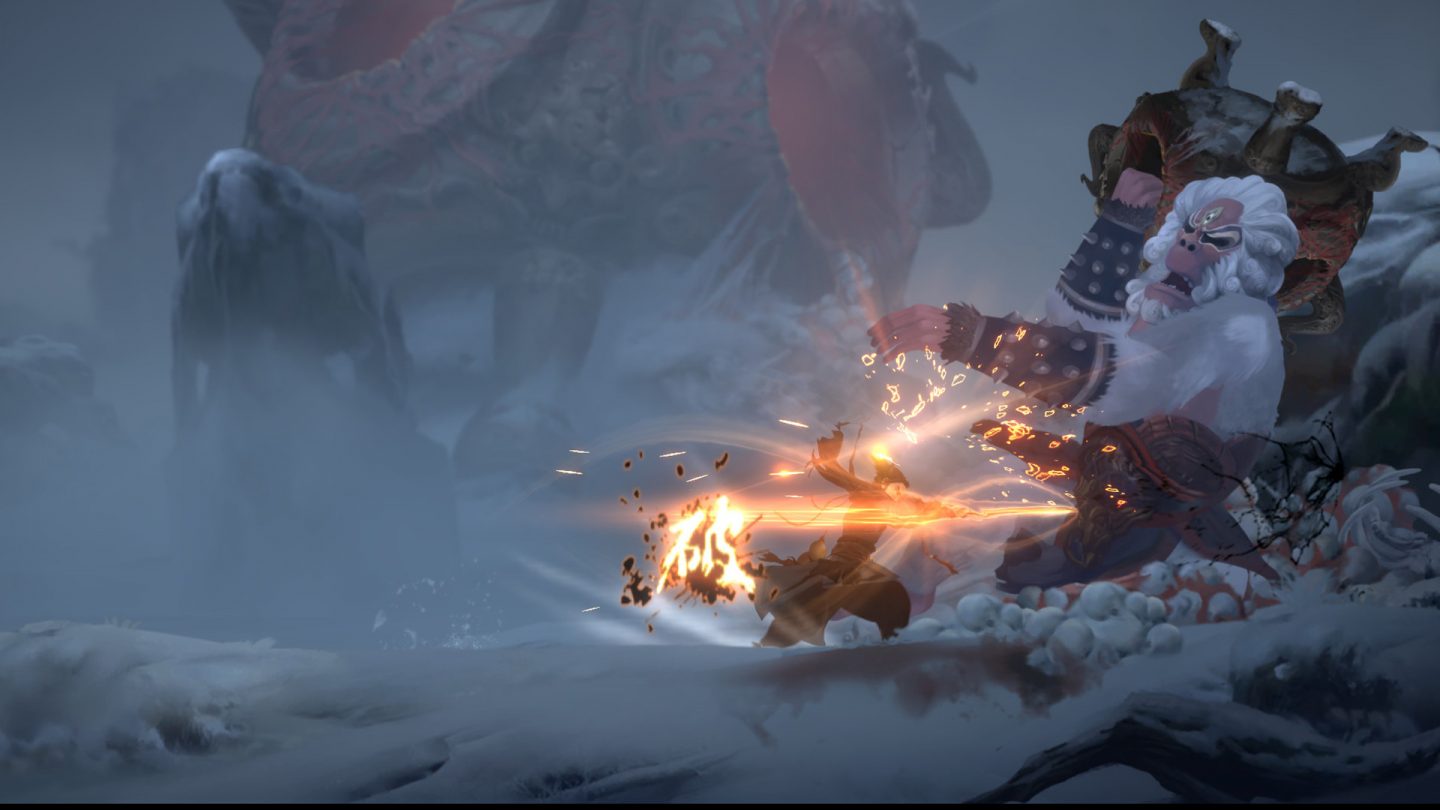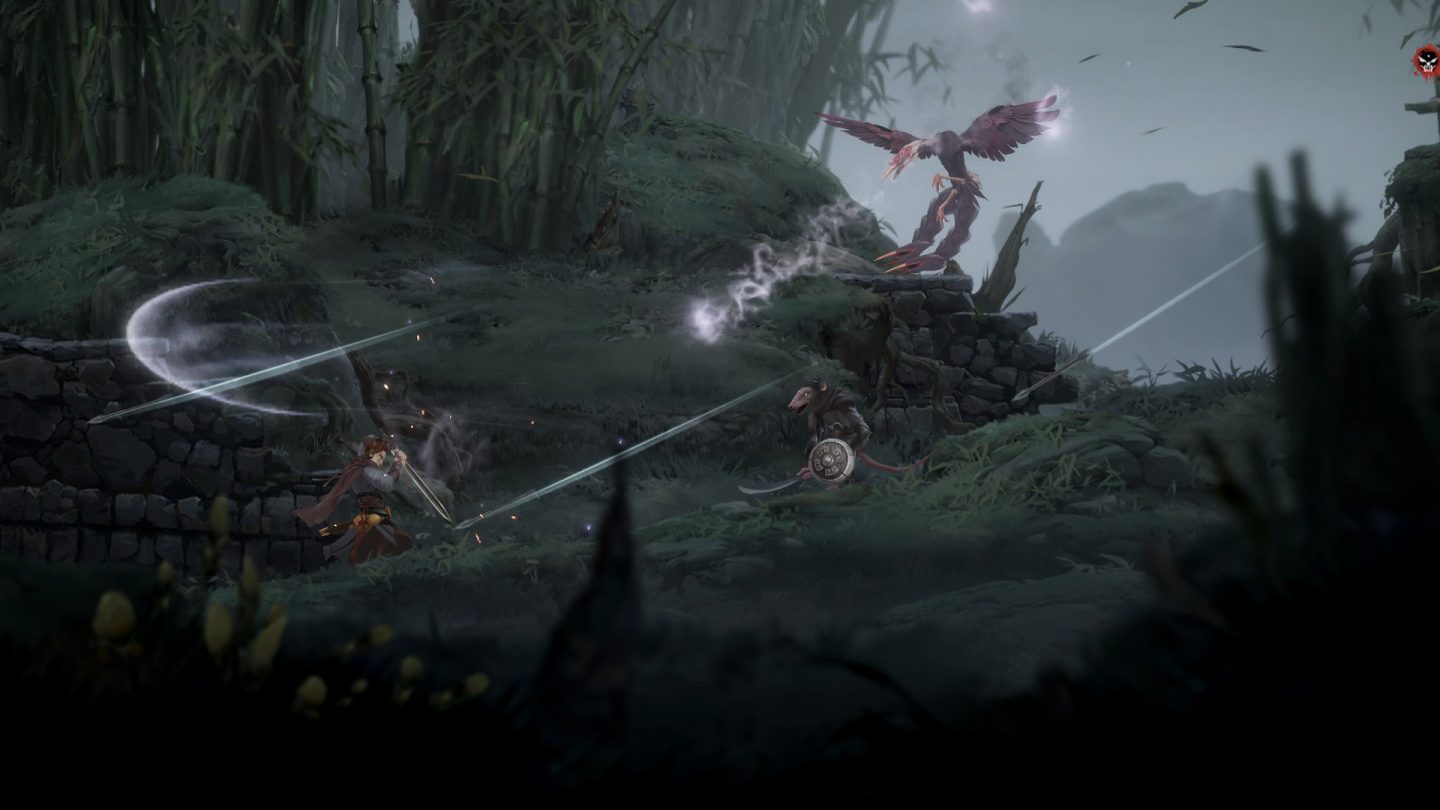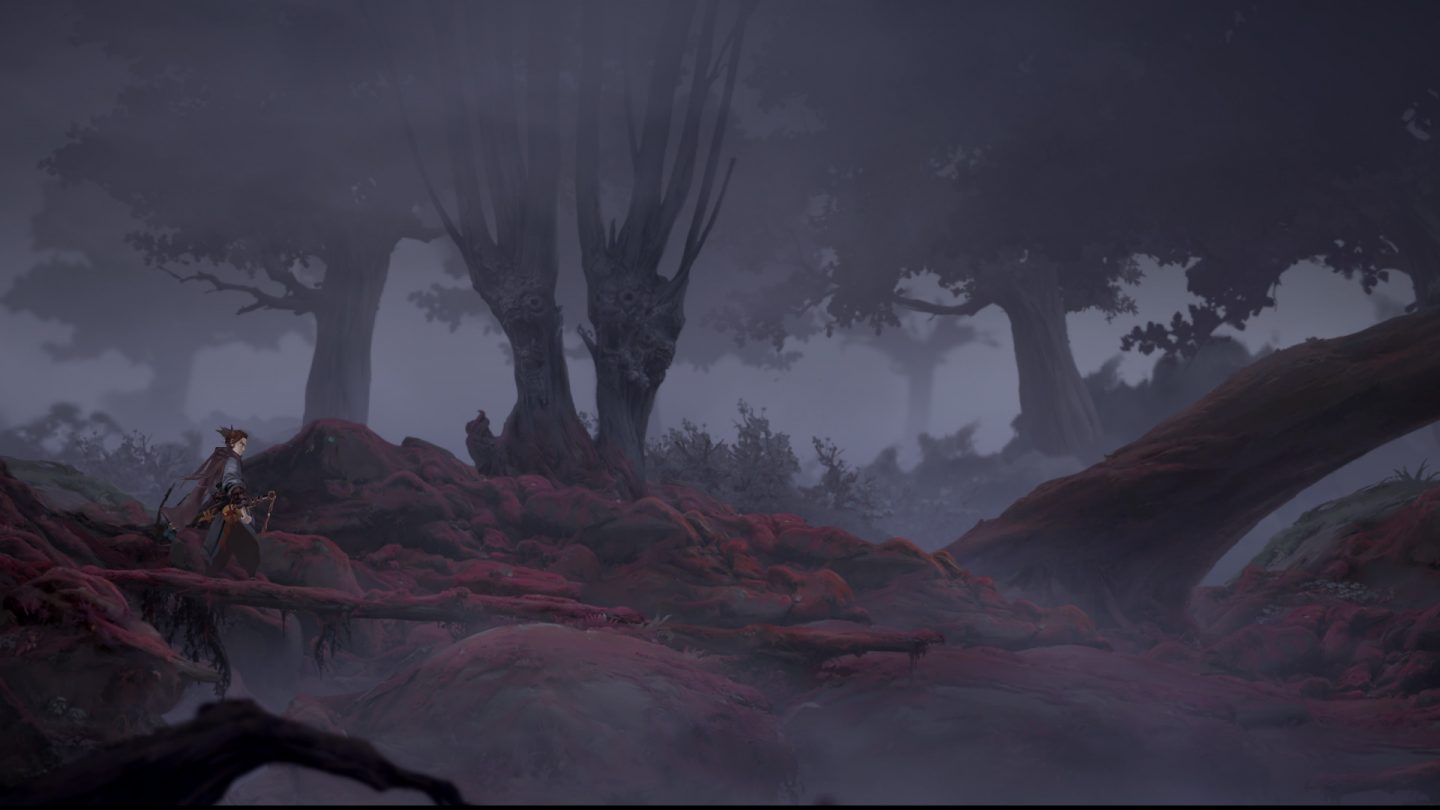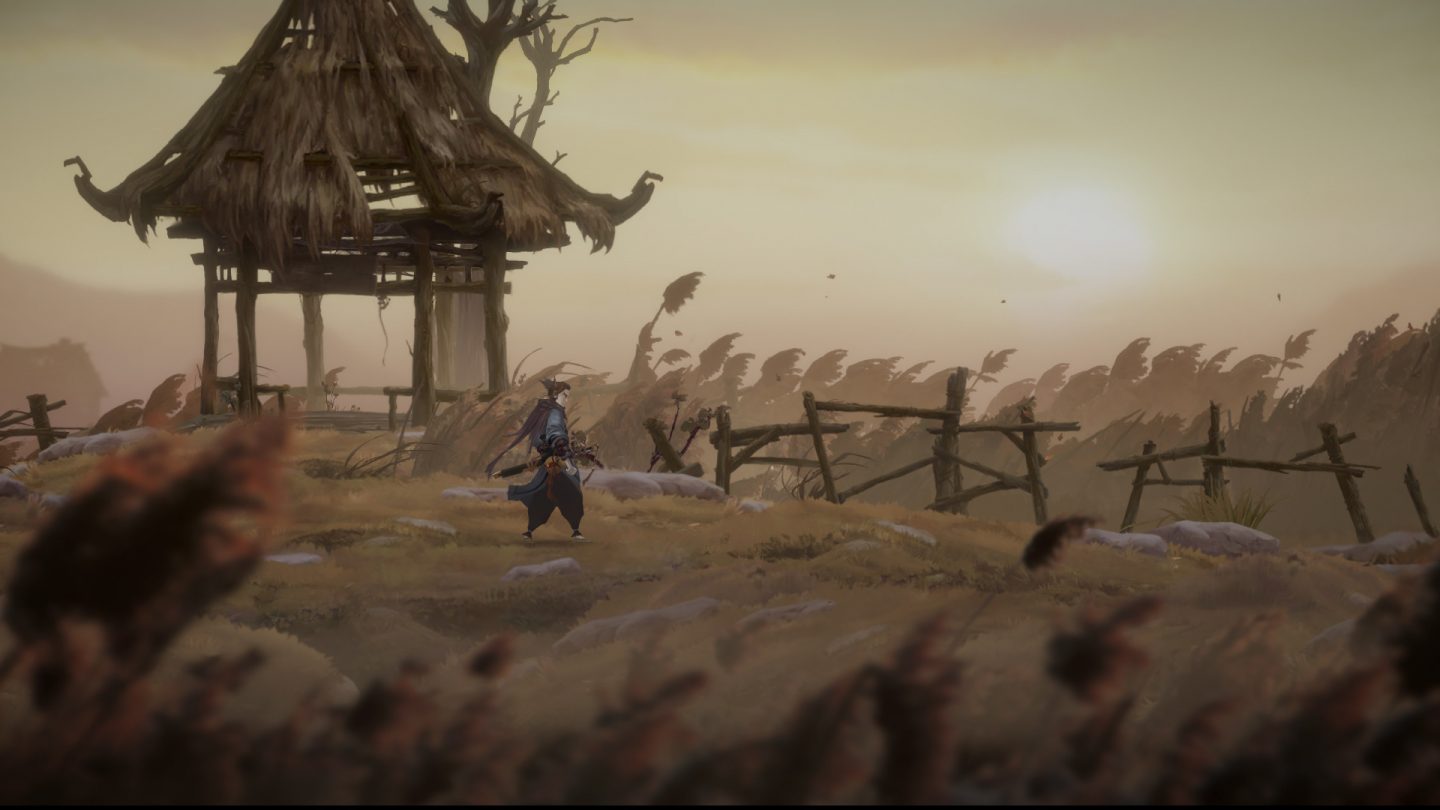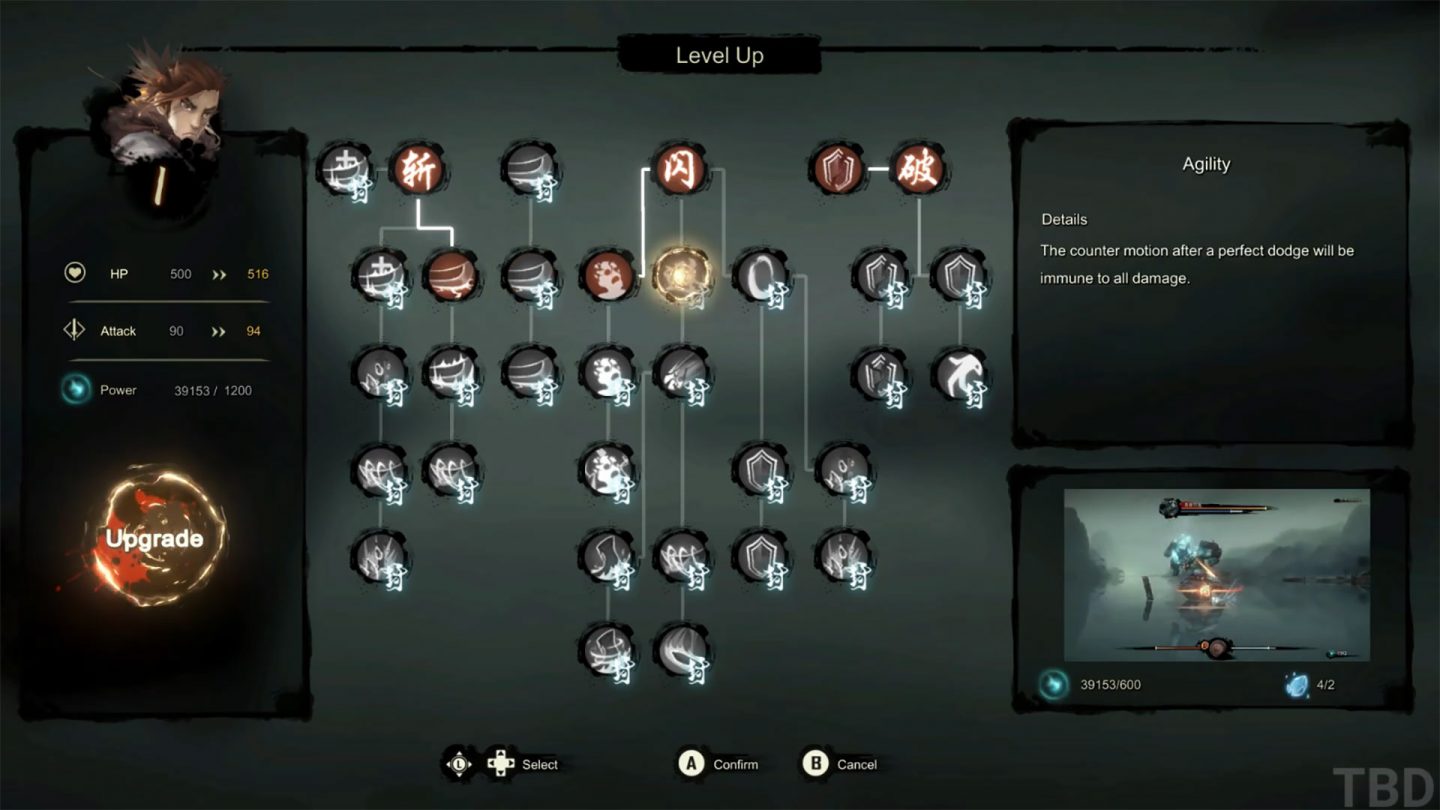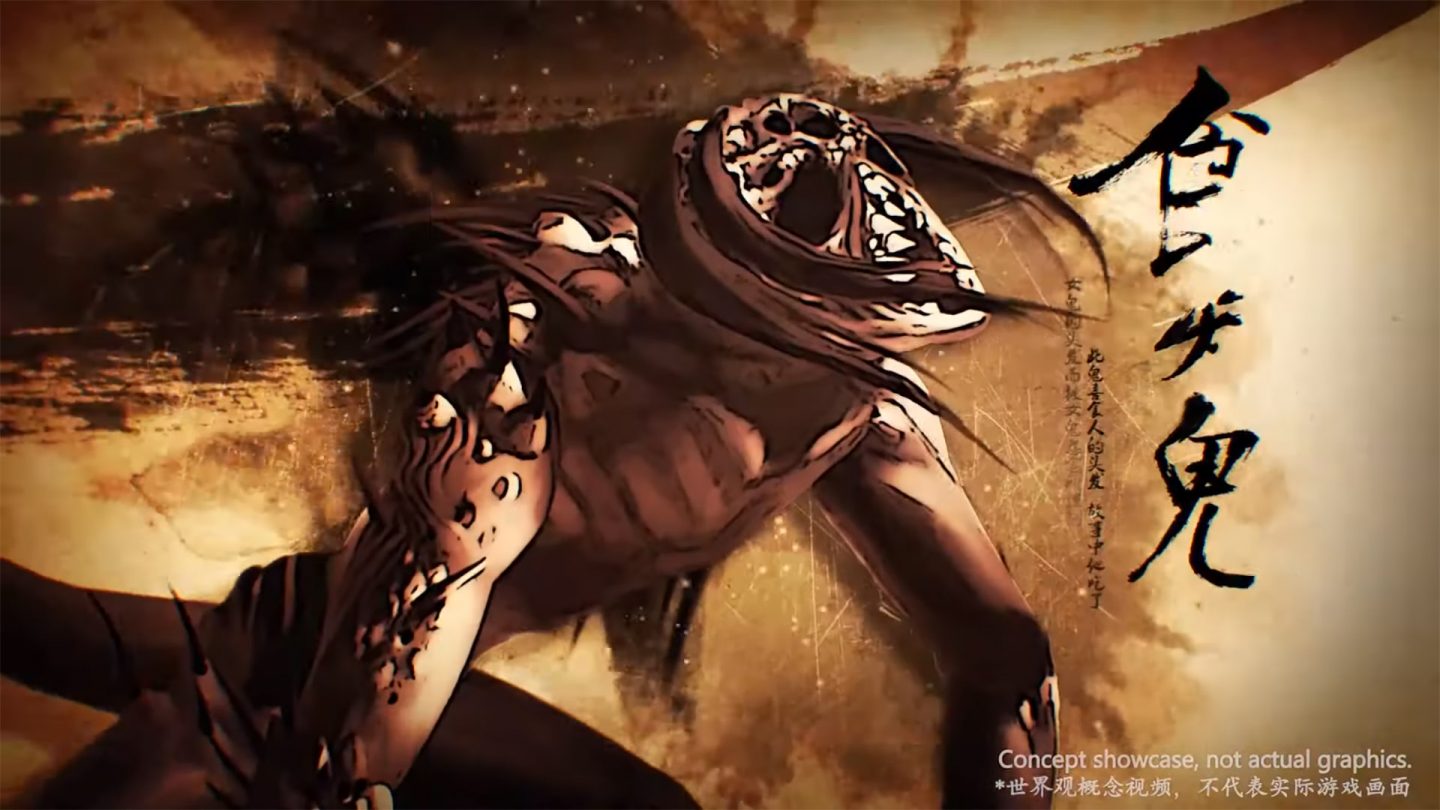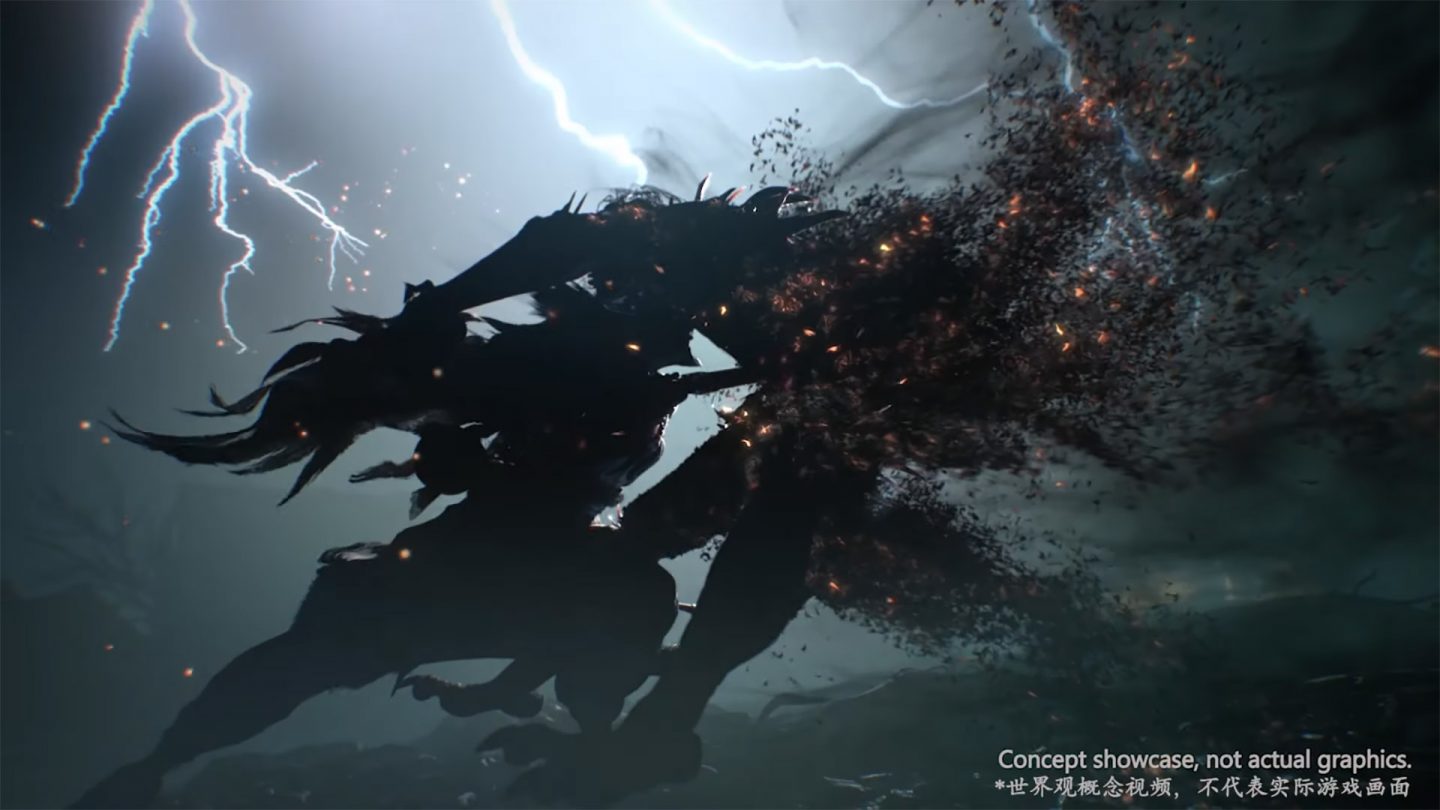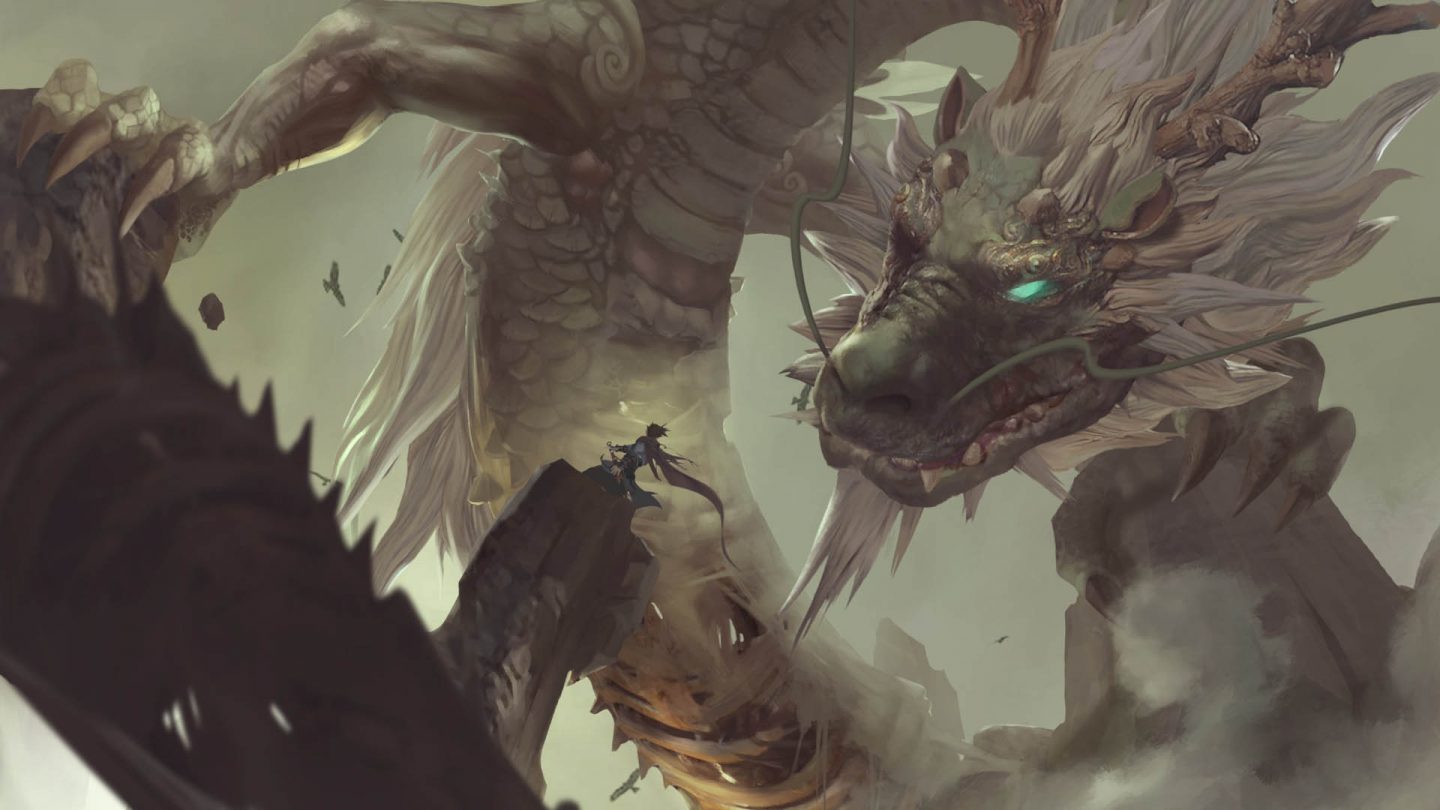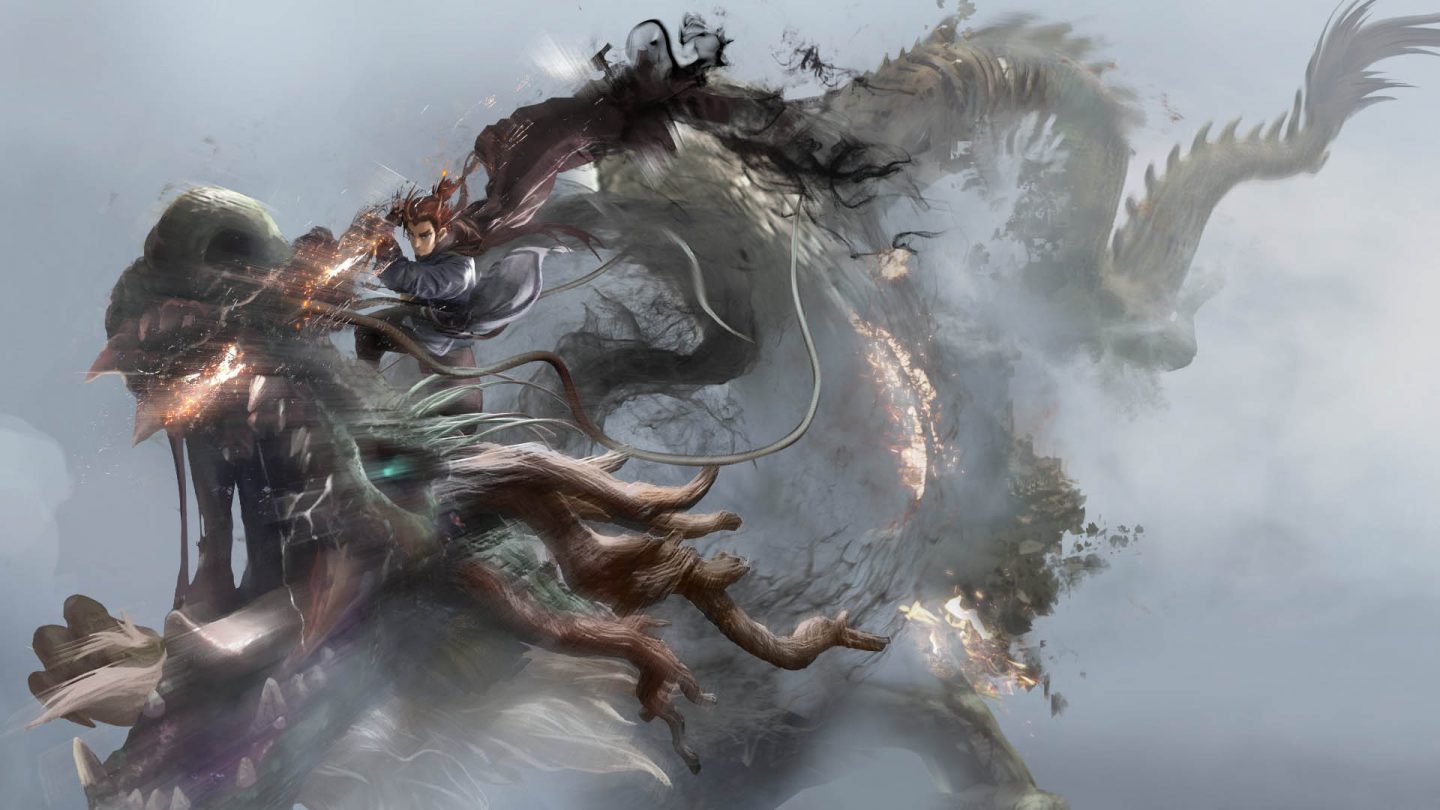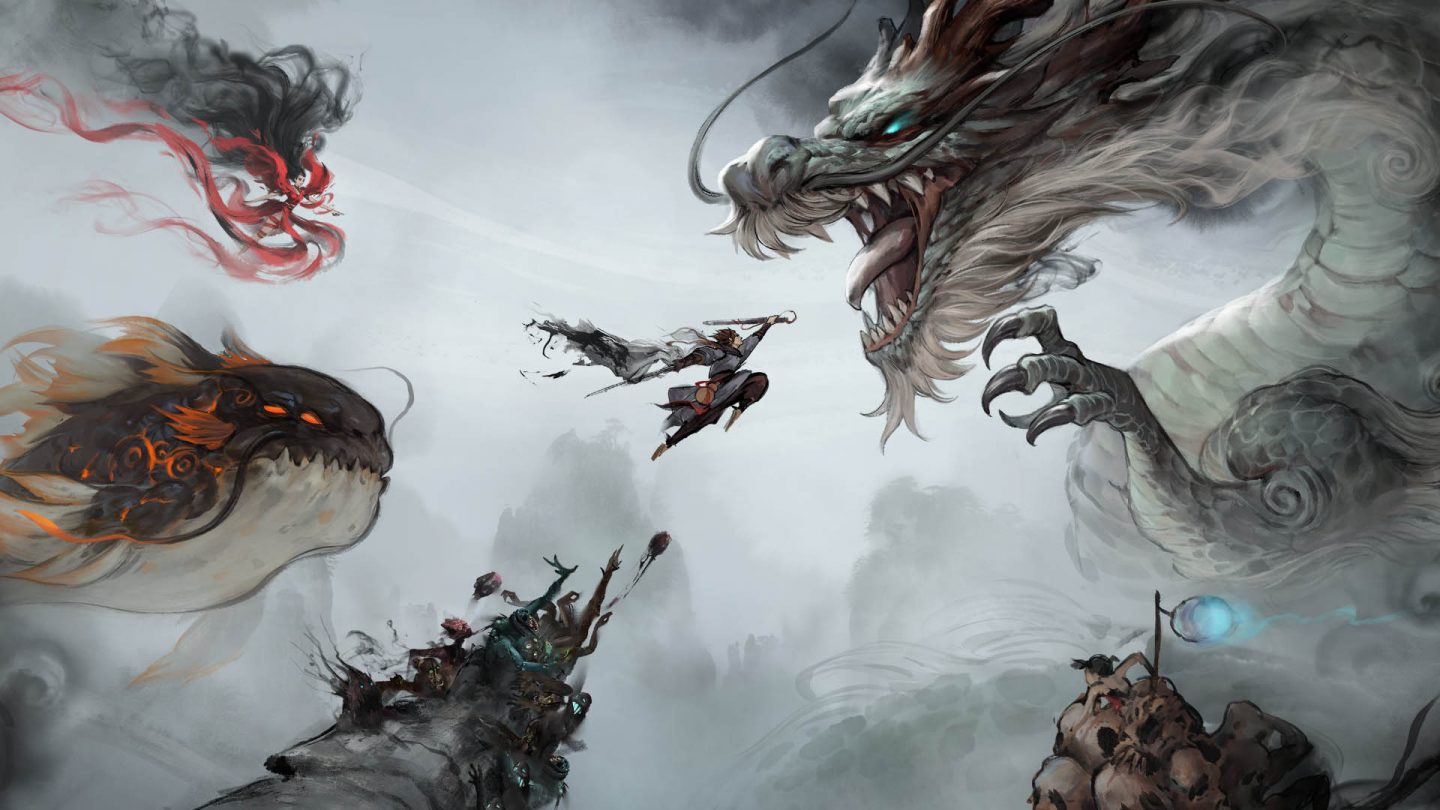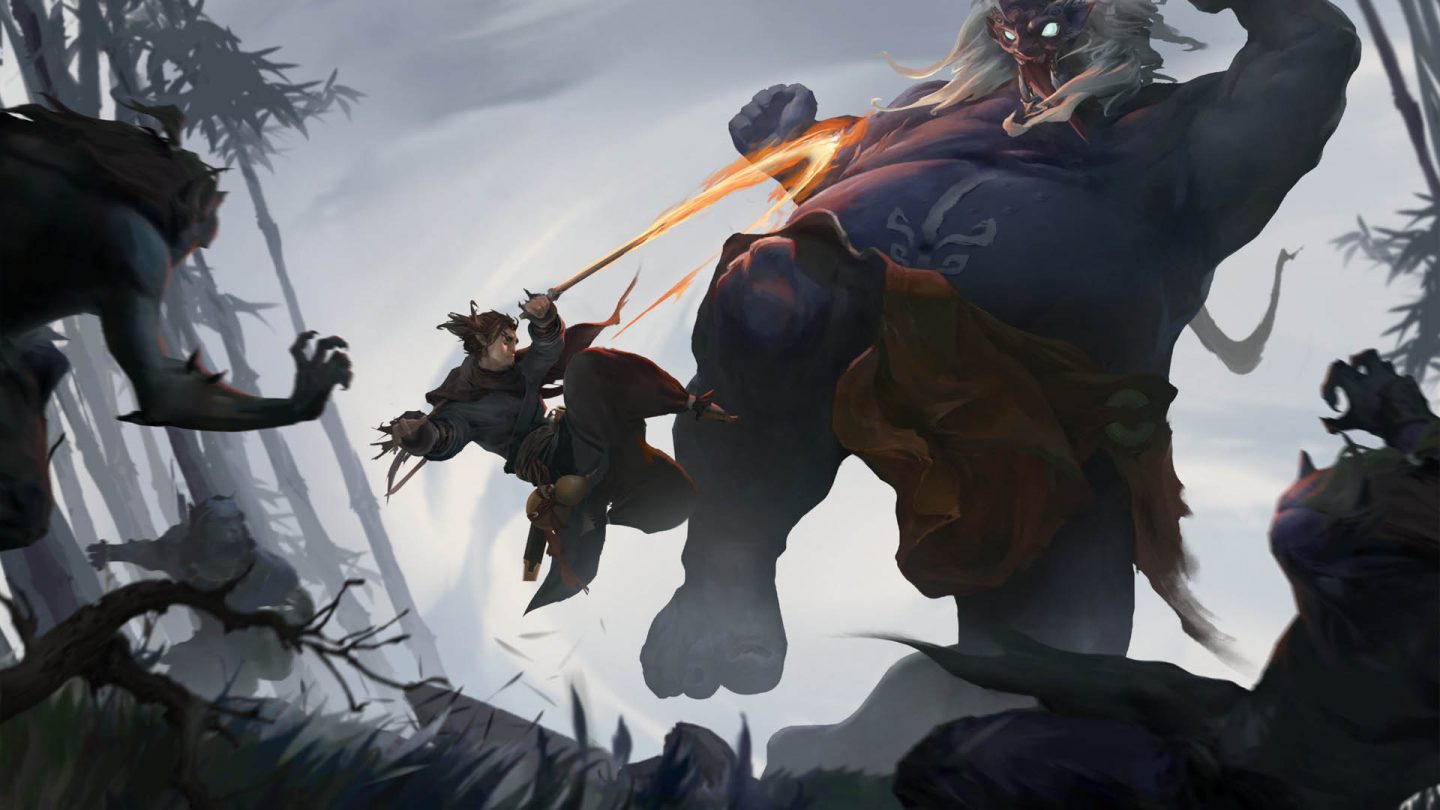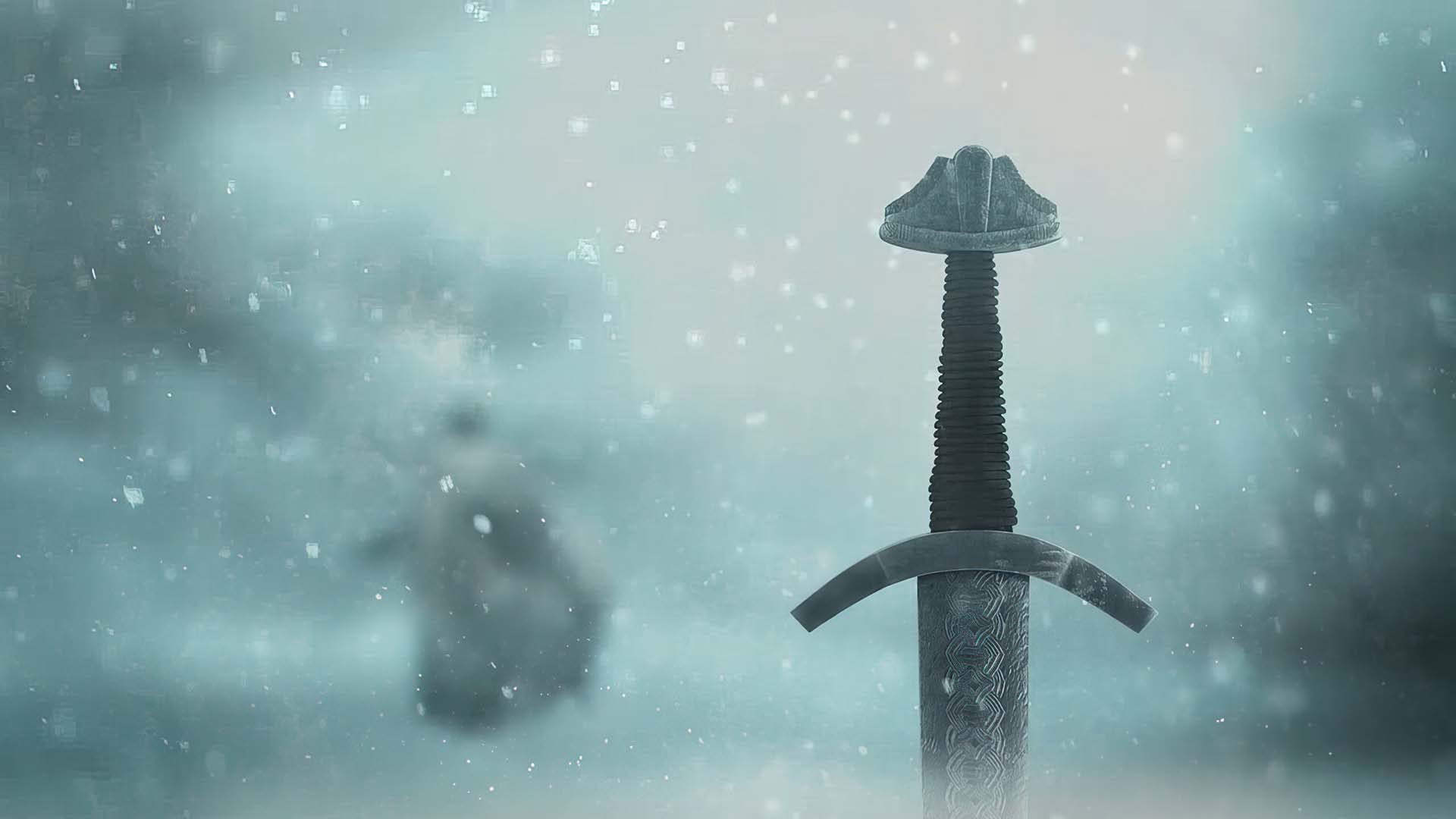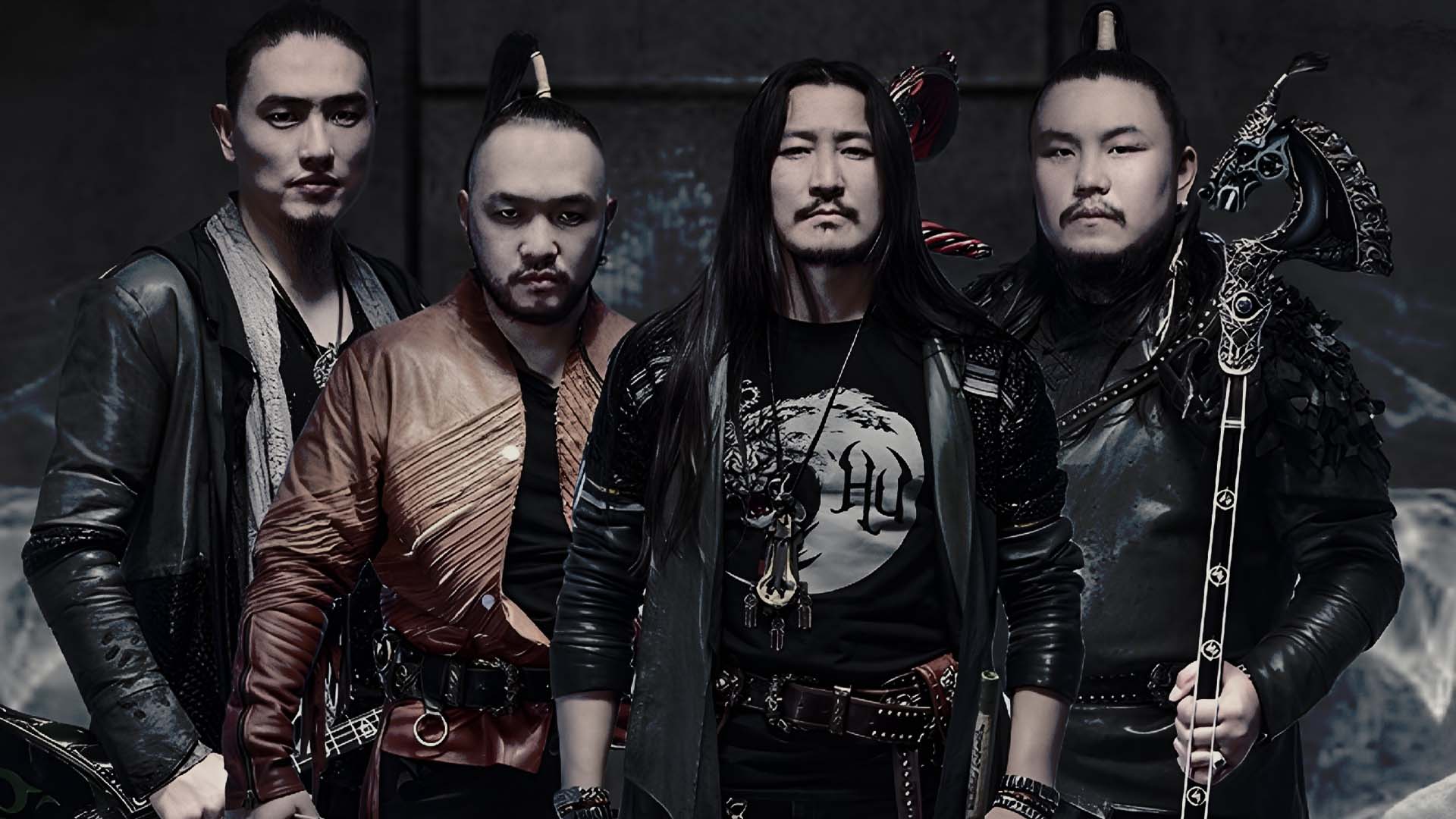July 26, 2021 — The most recent release from Chinese publisher Bilibili, Eastern Exorcist is a hack-and-slash RPG that somewhat surprisingly does not make use of Free2Play mechanics — the established business practice in China for most games. Eastern Exorcist instead offers a more traditional approach to monetization — players pay once, as with a typical western title.
Stylistically, Eastern Exorcist is rooted in traditional Chinese folklore and opera. Its gameplay, however, draws clear inspiration from ever-green From Software’s seminal Dark Souls. It is no secret among gamers that the so-called “2D Souls-like” is a prevalent archetype these days. In a crowded market, it can be difficult to make such a game stand out. However, Eastern Exorcist manages to shine in more than a few ways and could be a portent of a promising future for the game’s publisher, Bilibili.
Bilibili — Stepping On Stones to “Eastern Exorcist’
Founded by Xu Yi in 2009, Bilibili (nicknamed B Site) was officially launched as a Chinese video-sharing website in January 2010. Since then, it has developed into both a video hosting service as well as a streaming platform and has become home to many content creators. Over the years, B Site has grown large enough it now holds the status as one of the most popular internet destinations in China.
“The combat system puts a unique spin on a rather respectable Souls-like with fights that are consistently fun.”
Given the B Site’s focus on comics, animation, and video games, it was only a matter of time before Bilibili began to publish games. The first of these titles to be released on Steam was Hermitage: Strange Case Files that came out in 2018, which has recently been picked up for a reboot on Steam and major consoles. Since that first release, Bilibili has been steadily picking up steam (pardon) in the publishing department, releasing quite a few titles in just three short years.
Bilibili-published games have occupied various genres and styles and featured a wide range of influences. The earliest, of course, is Eastern Exorcist, a 2D Souls-like that launched in Steam Early Access around a year ago (in August of 2020) and was developed by Wildfire Game (not to be confused with the international open-source game and mod community, Wildfire Games) in what appears to be the Chinese development team’s debut title.
A Sound Soul
Eastern Exorcist’s playable cast consists of two characters. Male exorcist Lu Yunchuan is a well-rounded player avatar that delivers consistent damage output, while half-demoness Xiahou Xue is more agile and offers a bit more complex interaction. The two play slightly differently, but overall, combat in Eastern Exorcist revolves around a few core principles — dodging, parrying, and stamina management — in an obvious, Souls-like fashion.
For many players, the inherent challenge that comes with the often-oppressive mechanics of a Souls-like is also the genre’s main draw — although Eastern Exorcist’s “Normal” difficulty setting does not present the consistent, diabolical challenge Dark Souls and Sekiro players might be looking for. This is due in part to the “Exorcism Art” — powerful, cooldown-locked abilities that can be learned as players progress through the lush Asian levels. The “Exorcism Art” abilities are different depending on the character chosen (and can be leveled up and improved independently.)
While the core skills do a lot of the heavy lifting for players, making combat much easier than any Souls game, overall the mechanics add depth and replay value to the game’s monster battles — it is impossible to max out every ability in a single playthrough, which offers some incentive for replays but also risks giving many players the impression the replay value is artificial at best and experiencing the game multiple times is more of a forced grind than a funfilled exploration of the Far East.
The only real issue at the core of all this demon-fighting is the level-up system. To reach either character’s maximum level, players must complete so-called “Challenges” — which are optional in terms of playing through the game. Half of the challenges are battles with enhanced versions of defeated bosses, and can sometimes be quite difficult, although most of them feel drawn out and repetitive. The other half, however, are essentially extended tutorials — which is highly unfortunate since playing the game’s tutorials all over again provides little joy. While on the subject of tutorials, it should be noted these are in place at the beginning of each playthrough and that they are possibly Eastern Exorcist’s most off-putting quality. Especially since they are mandatory and cannot be skipped, hence they drag on for far too long in an almost constant repeat. Locking level-ups behind even more tutorials borders on torturous, and it is clear design choices have been made either in a hurry or perhaps to cater to Chinese gamers who might be more accepting of grind.
Exorcism in the East: Inner Demons, Outer Strife
When all is said and done, Eastern Exorcist’s combat system puts a unique spin on the stand-by Souls-like archetype. Fights are consistently fun if sometimes a little on the easy side. Also, it would have been nice to see more nuance between the characters although it should be said that combat similarities notwithstanding, each player character does have its own story to follow.
Lu Yunchaun’s tale is one of survival, disgrace, betrayal, and redemption. Lu travels the world attempting to honor his fallen companions even after he is exiled from the Exorcist order, accused of failing to defend his juniors. His journey takes him to his comrades’ hometowns, where he will do everything in his power to dispel violence and unrest. Lu Yunchuan is dressed mainly in blue and red, which both symbolize steadfast loyalty in traditional Chinese opera.
The story of Xiahou Xue tells of forgiveness and finding one’s place in the world. As half-demons, she and her brother are hated by both humans and demons. Xue attempts to bridge this gap and nurture positive relations, despite being wronged constantly. She is dressed mostly in pink, which represents level-headedness. Conversely, Xiahou Xue’s brother wishes to embrace his demonic side in pursuit of power. He appears in a spiritual form, colored green, that represents violence and impulsiveness.
While branching paths are almost always a welcome and enjoyable feature for a game to have, Eastern Exorcist’s approach sadly leaves a little to be desired. For starters, the player character’s stories share almost zero narrative connections, apart from them taking place in the same universe. They do however share — or recycles — much of the game’s art, the same environments, enemy types, and even a few identical bosses. This, on its own, is not immediately damning but the fault at hand lies in the execution. It is entirely believable both characters would be able to encounter any given environment and therefore battle some of the same foes, however, the recycled boss battles, in particular, feel like a somewhat desperate attempt to add “filler content” only to extend the duration of the game artificially. On a brighter note, enemy designs (bosses included) are outstanding and disturbing enough to make players raise an eyebrow or two — think Bloodborne meets Chinese folklore.
A Painted World
The art direction of Eastern Exorcist is truly something to behold. The game itself is masterfully hand-drawn with models that are animated smoothly, moving like paper-crafted puppets rather than autonomous beings. This may sound like criticism, but in reality, it is downright awesome. The animation is consistent with the way everything is drawn, creating a cohesive, unique visual style.
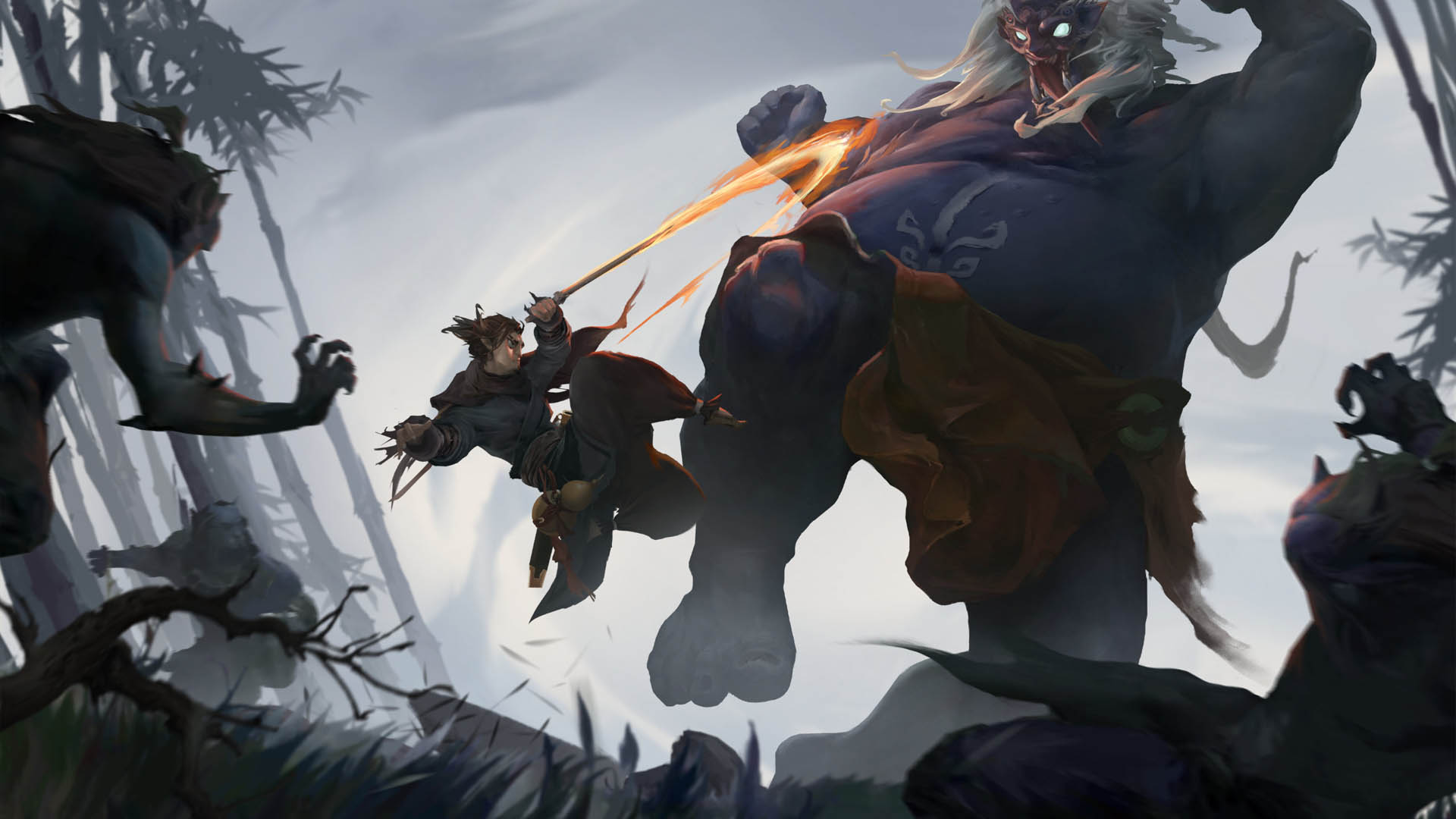
The pair of player campaigns share one more odd, boss-related parallel. There is a considerable easing of difficulty toward the end of both stories. This is strange and feels backward as games typically up the ante as players improve and progress. That being said, the eased lull is deceptive, as both player stories end with battles whose difficulty far exceeds anything experienced previously, almost to the point of frustration. This amounts to an abrupt, confused, and muddled ending — in both cases. Clearly, combat diversity and mechanics are not where this game stands out.
Narratively, Eastern Exorcist follows a few common themes and executes them well. Many cutscenes are narrated in an eerie, sing-song fashion — a combination of lyric and haunting music — and the stories often reference Chinese opera performances, particularly via their episodic structure. The overall tone is grim, at times both physically and emotionally brutal, making for a compelling story. The only stipulation is that, for Western players, much of that story may be lost in what is undoubtedly a rather rough, machine-like translation.
Verdict
6
Out of 10
The Good
- The visual style is distinctive, stylish, and looks quite cool.
- Combat has a surprising amount of depth, especially for a 2D game.
- Overall, the game feels inspired and culturally rich. Also, it is a Souls-like.
Additional thoughts
- The two campaigns share too many similarities and lack a narrative connection.
- Level-ups are gated behind repetitive yet optional “Challenges”.
Final Reflection
Eastern Exorcist is cause for excitement. Mechanically rough around the edges, and perhaps a little rushed, yes. But, as mentioned above, these flaws could easily be improved, and given the title’s history in Steam Early Access, the development team might continue to polish and update the game in accordance with players’ feedback. The game’s wonderful art style and creative approach are unique and bode well for Bilibili’s future publishing endeavors — including the upcoming F.I.S.T., which appears to be another art-heavy 2D runner. Indie fans may want to keep a close eye on this particular publisher, especially since a PlayStation version has been announced of Eastern Exorcist which is a more suitable platform for this type of game.
The Windows version of Eastern Exorcist is available now on Steam, where it has amassed over 4,000 reviews at the time of writing. A PlayStation version is in development with a tentative release date of early 2022.






